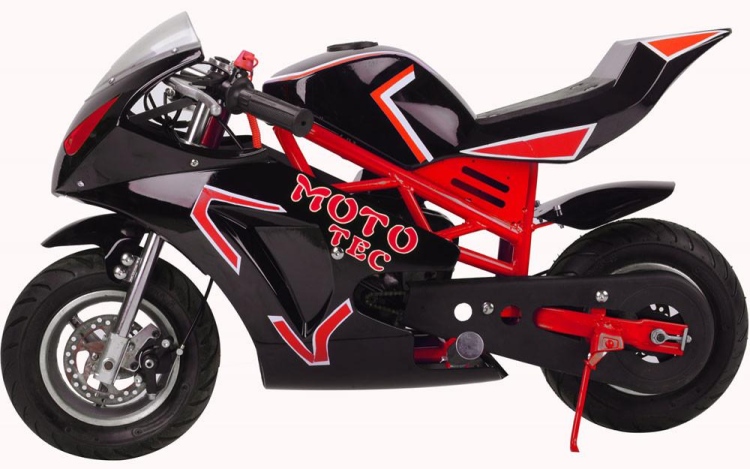Pocket bikes offer everything that normal sized bikes do, but packed in a smaller size. This small size isn’t a flaw, or a shortcoming, it’s what makes them fun. Before you decide to buy one of the mini sized rocker, you should know what exactly makes a pocket bike. So, following are some points that will help you make sense of the crazy machines that these bikes are.
Pocket bikes, or mini bikes, are characterized by their smaller frames and minimal engine capacities. Minimal here means as little as needed to propel the rider and the machine forward at a thrilling speed.
Engine capacity
Lower limit for engine capacity averages around 40-50 cubic centimetres, and while some lesser known brands are able to shrink this size by another tenth, such bikes are devoid of all practical thrills. The reason is simply a lack of power. The higher limit averages around 125, in both off-road and street options. While some manufacturers do stretch the limits to create machines as big as 250cc, they tend to belong more to full-sized and street legal bike categories than those of mini bikes. Bikes like the “Honda Grom” can easily fool the eye when looked independently, especially when mounted by riders who are shorter than average.
Frames
The frame sizes of pocket bikes tend to vary between too small, as in “can accomodate children only”, small as in “cozy for the average adult”, and average as in “not really mini”. The smaller sized models barely accommodate the average adult, sometimes leaving less than two inches between the rider and the asphalt, which is part of the thrill.
Engine types
Going into details of the kinds of engines used, as can be inferred from before, most pocket bikes run on petrol or gasoline fuelled engines. Low capacity of the engines restricts the number of cylinders, which can be used with efficiency, to one. In order to extract maximum power from modest specifications, the engines also feature high compression ratios, sometimes going as high as 11 to
1. This, aided with deeper and wider bores, means explosive power.
In their early days, pocket bikes were made from two stroke Pocket Bikes engines, which were lighter and carried a higher power-to-weight ratio. Over the years, there has been a shift, and a substantial quantity of mini bikes are sunning on four strokes. Four stroke engines’ weight and space disadvantages are offset by their relative efficiency or ability to extract more power from the same amount of fuel. Also, when the rider is sitting closer to the engine, thermal output becomes an issue. As two stroke engines tend to emit more heat, their four stroke counterparts win another point on practicality.
Owing to the same reasons, pocket bikes can do more miles to the gallon. This however doesn’t necessarily mean that you will go farther, as the tanks sizes are also sacrificed in favor of smaller chassis.
Electric motors
With the advancements in power storing technology, battery cells are getting more efficient, and in the mini bike market, as in the wider automotive industry, electric motors are emerging to challenge the gasoline dominance. These are silent, quicker, and without question better for the environment.
The craze for pocket bikes has risen dramatically in the last two decades, expanding them from a cult stage to please a wider consumer base. And as more and more people continue to bestow their love on mini bikes, these small sized fun packets are proof that when it comes to joy, practicality is better left parked outside.




